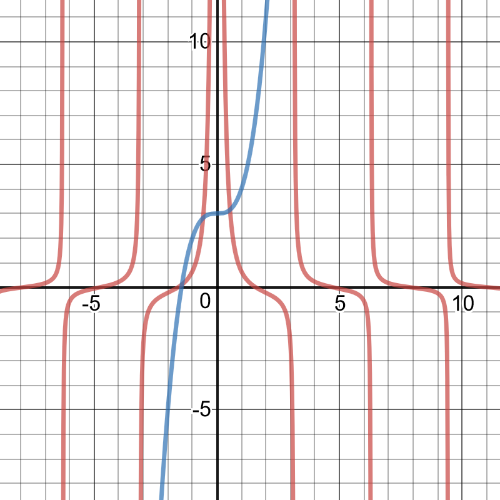
All Solutions
Page 578: Chapter Self-Test
$A(r)=4 pi r ^2$
#### (b)
$V=dfrac{4}{3}pi r^3$
$dfrac{3V}{4pi}=r^3$
$sqrt[3]{dfrac{3V}{4pi}}=r$
So, $r(V)=sqrt[3]{dfrac{3V}{4pi}}$
#### (c)
$A(r(V))=Aleft(sqrt[3]{dfrac{3V}{4pi}} right)$
$=4pileft(sqrt[3]{dfrac{3V}{4pi}} right)^2$
$=4pileft(dfrac{3V}{4pi} right)^{dfrac{2}{3}}$
#### (d)
$$
4pileft( dfrac{3(0.75)}{4pi}right)^{dfrac{2}{3}}=4m^2
$$
Fromt he following graph we can see that $textbf{solution}$ is $-1.62 leq x leq 1.62$.

$g(x)=(x+3)^7$ and $h(x)=2x$
Use a graphing calculator to detrmine the regression equation.
$N(n)=1n^3+8n^2+40n+400$
#### (b)
$N(3)=1(3)^3+8(3)^2+40(3)+400=27+72+120+400=619$
$-3=6(2)+b$
$-3=12+b$
$-15=b$
So,$f(x)=6x-15$
$g(x)=5(x+8)^2-1$
$(ftimes g)(x)=(6x-15)(5(x+8)^2-1)$
$=(6x-15)(5(x^2+16x+64)-1)$
$=(6x-15)(5x^2+80x+320-1)$
$=(6x-15)(5x^2+80x+319)$
$=30x^3+405x^2+714x-4785$
There is a horizontal asymptote of $y=275cm$. This is the maximum height this species will reach.
#### (b)
$150=dfrac{275}{1+26(0.85)^t}$
$150(1+26(0.85)^t)=275$
$26(0.85)^t=(275div 150)-1$
$26(0.85)^t=0.8333$
$(0.85)^t=0.03205$
$tlog0.85=log 0.03205$
$t=21.2$ months
$5x+18=2x^2$
$2x^2-5x-18=0$
$(2x-9)(x+2)=0$
$x=4.5$ or $x=-2$
Negative answers do not make sense in this context, so, $textbf{the answer is}$ $x=4.5$ or $4500$ items.
From the following graph, we can see that $textbf{the solutions}$ are:
$x=-3.1, x=-1.4, x=-0.6, x=0.5, x=3.2$.

Haven't found what you were looking for?
Search for samples, answers to your questions and flashcards

